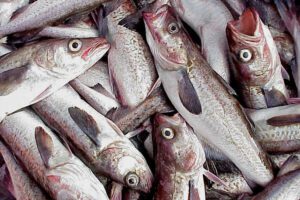by Matt Alward, Alaska Beacon.
October 27, 2025
As food prices rise and federal leaders revisit trade and nutrition policies, one solution has quietly been working for decades: Alaska’s commercial seafood industry. It is not only a pillar of our state’s economy, but also a strategic asset in strengthening America’s food security, trade competitiveness, and public health.
I’ve spent nearly 30 years working on Alaska’s waters. Today, as president of United Fishermen of Alaska, I represent thousands of harvesters and shore-based businesspeople whose livelihoods depend on clean, healthy oceans and fair access to markets. We know how much Alaska seafood contributes to this country—and how often it’s overlooked. While I speak mostly about Alaska seafood in this piece, most seafood from anywhere else in the United States is similarly beneficial, while being well-managed and held to stringent regulatory standards.

Alaska’s seafood industry generates more than $15 billion in annual economic output and supports over 81,000 U.S. jobs across fishing, processing, shipbuilding, logistics and more, including more than 23,000 captains and crew in Alaska alone. Alaska harvests nearly 5 billion pounds of wild seafood annually, producing more than all other U.S. states combined. It is the foundation of local economies in communities like Homer, Kodiak and Dillingham. Across the Lower 48, it fuels supply chains from grocery stores to restaurants to international exporters.
But while Americans eat more seafood than ever, up to 85% of it is imported according to the National Oceanic and Atmospheric Administration—often from countries with weaker labor, environmental and food safety standards. Buying Alaska seafood is a direct investment in American jobs, values, and resource stewardship. Yet, at the same time, about two-thirds of Alaska’s wild seafood is exported internationally, rather than feeding Americans.
Beyond economics, Alaska seafood is one of the healthiest foods available. It’s high in protein, naturally low in saturated fat and free from additives or preservatives. Species like salmon, pollock, sablefish and sole are rich in vitamin D, B12, selenium and the powerful antioxidant astaxanthin.
Most notably, Alaska seafood is one of the best dietary sources of omega-3 fatty acids. These nutrients support heart and brain health and are more bioavailable from seafood than from plant sources. Yet 90% of Americans aren’t eating the recommended two servings of seafood per week, missing out on these essential nutrients. The FDA and EPA recommend pregnant and breastfeeding women consume seafood two to three times per week. All wild Alaska species such as salmon and pollock are listed among their “best” and “good” choices for low mercury contaminant levels.
America manages its fisheries better than any country in the world and Alaska takes it even a step further. Alaska was the first state to embed sustainable fisheries management into its constitution. Our stocks are managed using science-based strategies, annual quotas, ecosystem protections and strong enforcement. That means when people choose America and Alaska seafood, they’re not only choosing healthy protein but they are also supporting the long-term health of the ocean.
As policymakers debate how to strengthen domestic food security and improve public health, Alaska seafood must remain a priority. This means supporting trade access and public nutrition guidelines that reflect the health benefits of fish. Supporting promotional and marketing programs at home and abroad would help educate Americans and those across the globe about Alaska seafood’s many benefits. For Alaska, it also means recognizing and protecting the working families and small businesses that make this industry possible.
Supporting Alaska seafood is not just about what’s on the dinner table. It’s about keeping American dollars in American communities, reducing reliance on imports, and preserving a resource that sustains our fishermen, our oceans and our bodies. For our economy, our health and our future, Alaska seafood is the smart choice.
GET THE MORNING HEADLINES.
Alaska Beacon is part of States Newsroom, a nonprofit news network supported by grants and a coalition of donors as a 501c(3) public charity. Alaska Beacon maintains editorial independence. Contact Editor Claire Stremple for questions: info@alaskabeacon.com.
Come Aboard
"*" indicates required fields
